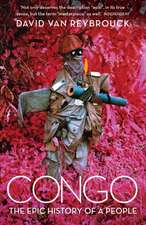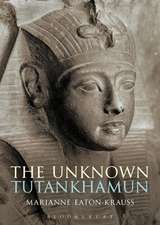Vandals, Romans and Berbers: New Perspectives on Late Antique North Africa
Editat de Andrew Merrillsen Limba Engleză Paperback – 9 sep 2016
| Toate formatele și edițiile | Preț | Express |
|---|---|---|
| Paperback (1) | 387.25 lei 6-8 săpt. | |
| Taylor & Francis – 9 sep 2016 | 387.25 lei 6-8 săpt. | |
| Hardback (1) | 1177.10 lei 6-8 săpt. | |
| Taylor & Francis – 19 noi 2004 | 1177.10 lei 6-8 săpt. |
Preț: 387.25 lei
Nou
Puncte Express: 581
Preț estimativ în valută:
74.10€ • 79.24$ • 61.78£
74.10€ • 79.24$ • 61.78£
Carte tipărită la comandă
Livrare economică 18 aprilie-02 mai
Preluare comenzi: 021 569.72.76
Specificații
ISBN-13: 9781138252684
ISBN-10: 1138252689
Pagini: 368
Dimensiuni: 156 x 234 x 19 mm
Greutate: 0.5 kg
Ediția:1
Editura: Taylor & Francis
Colecția Routledge
Locul publicării:Oxford, United Kingdom
ISBN-10: 1138252689
Pagini: 368
Dimensiuni: 156 x 234 x 19 mm
Greutate: 0.5 kg
Ediția:1
Editura: Taylor & Francis
Colecția Routledge
Locul publicării:Oxford, United Kingdom
Cuprins
Contents: Introduction: Vandals, Romans and Berbers: understanding Late Antique North Africa, A.H. Merrills. Part 1 African Identities: The Vandals: fragments of a narrative, Walter Pohl; The settlement of the Vandals in North Africa, Andreas Schwarcz; The house of Nubel: rebels or players?, Andy Blackhurst; From Arzuges to Rustamids: state formation and regional identity in the pre-Saharan zone, Alan Rushworth. Part 2 Written Culture: 'Romuleis Libicisque litteris': Fulgentius and the 'Vandal Renaissance', Gregory Hays; Vandal poets in their context, Judith W. George; The perils of panegyric: the lost poem of Dracontius and its consequences, A.H. Merrills; The so-called Laterculus Regum Vandalorum et Alanorum: a 6th-century African addition to Prosper Tiro's chronicle?, Roland Steinacher; Who wrote the Ostraka from the Ilôt de l'Amirauté, Carthage?, Jacqueline F. Godfrey; Literacy and private documentation in Vandal North Africa: the case of the Albertini Tablets, Jonathan P. Conant. Part 3 The African Church In Context: Who were the Circumcellions?, Brent D. Shaw; From Donatist opposition to Byzantine loyalism: the cult of martyrs in North Africa 350-650, W.H.C. Frend; Intentions and audiences: history, hagiography, martyrdom, and confession in Victor of Vita's Historia Persecutionis, Danuta Shanzer; Disputing the end of African Christianity, MarkA. Handley. Select bibliography; Index.
Recenzii
'... this detailed scholarly collection is a most thorough study of North Africa in late antiquity; it will undoubtedly remain the definitive study on the topic for decades... Highly recommended.' Choice 'Vandals, Romans and Berbers is an extremely important collection of studies on a rather neglected range of topics, and will shortly become indispensable reading for anyone interested in the history of late antique and early medieval North Africa.' Scripta Classica Israelica 'It cannot be but a healthy field when scholars read with such sensitivity and interpret their sources with this much respect.' Early Medieval Europe 'The chapters contained within Vandals, Romans and Berbers do exactly that; they challenge the many pre-conceptions that students and scholars of late antique Africa may have, and encourage them to pursue their interests, whether they are ecclesiastical, literary, or social.' Bulletin of International Medieval Research
Descriere
Vandals, Romans and Berbers considers issues of ethnicity, identity and state formation within the Vandal kingdoms and the Berber polities, through new analysis of the textual, epigraphic and archaeological record. It reassesses the varied body of written material that has survived from Africa, and questions its authorship, audience and function, as well as its historical value to the modern scholar. The final section is concerned with the religious changes of the period, and challenges many of the comfortable certainties which have arisen in the consideration of North African Christianity, including the tensions between 'Donatist', Catholic and Arian, and the supposed disappearance of the faith after the Arab conquest. Throughout, attempts are made to assess the relation of Vandal and Berber states to the wider world and the importance of the African evidence to the broader understanding of the post-Roman world












